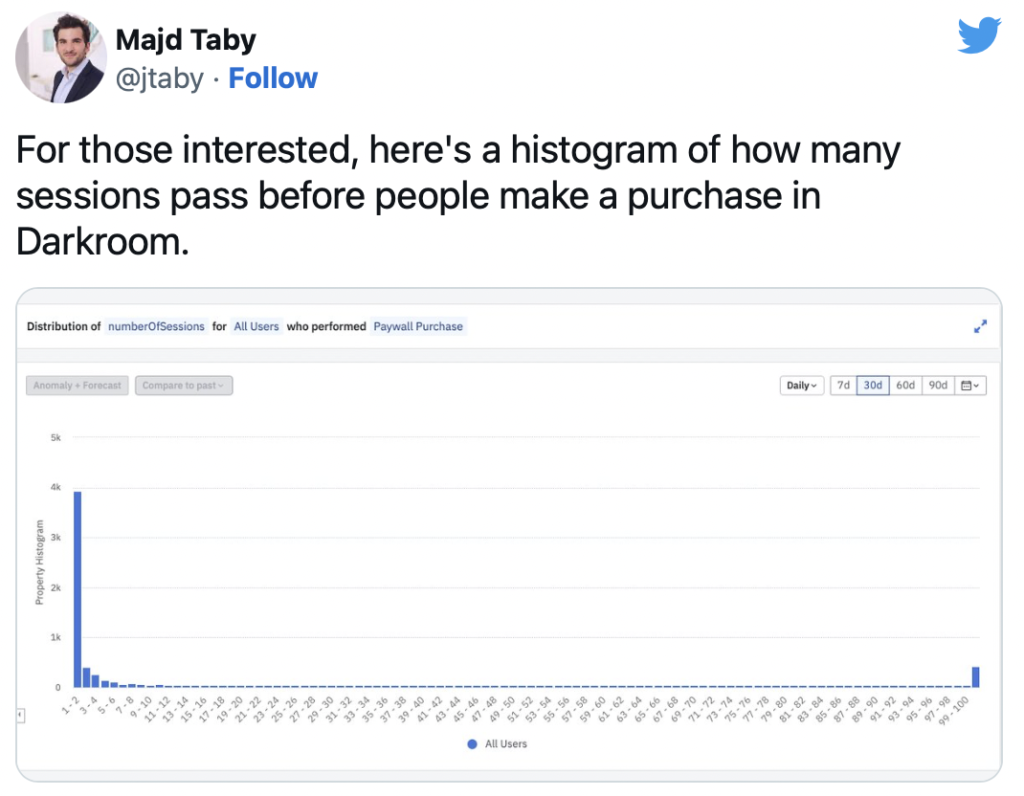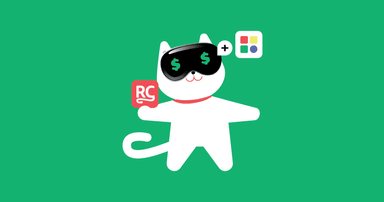Understanding Subscription App Benchmarks
And take a pulse on your mobile app business


David Barnard
RevenueCat now tracks close to $2 billion subscription app revenue across the App Store, Google Play, Amazon Appstore, and Stripe. It’s an absolute treasure trove of data that plenty of people would love to buy access to. But it’s not for sale.
Our customers are developers — not hedge funds, data brokers, or anyone else with deep pockets. And we pride ourselves on building a great product and charging a fair price for it without selling out our customers.
That said, we think it would be helpful to share our aggregate data publicly so developers can learn from it to build better apps and make more money. So we’ve started doing just that and will be sharing even more in the coming weeks and months.
Before you set company goals around our benchmarks, though, let’s talk about how to actually use those numbers.
How to think about subscription app benchmarks
Subscription app benchmarks are a great way for you to check how your mobile app business is doing. By comparing your app’s performance to the rest of the mobile app subscription industry, you can get a sense for whether your business is on track (or even ahead of the curve) and identify areas for improvement.
So what should this process look like?
The worst thing you could possibly do is to set one specific benchmark as your goal and align all of your app’s onboarding, marketing, and product iteration around it. To build a great long-term subscription business, you need to consider how each step in your funnel impacts every other step—from when a potential customer first becomes aware of your app until they hit that tenth annual renewal.
Optimizing for long-term success
Eric Crowley of GP Bullhound has a great take on what healthy, sustained app growth should look like: as he puts it, the best subscription app businesses are thoroughbreds, not cheetahs. Let’s break that down.
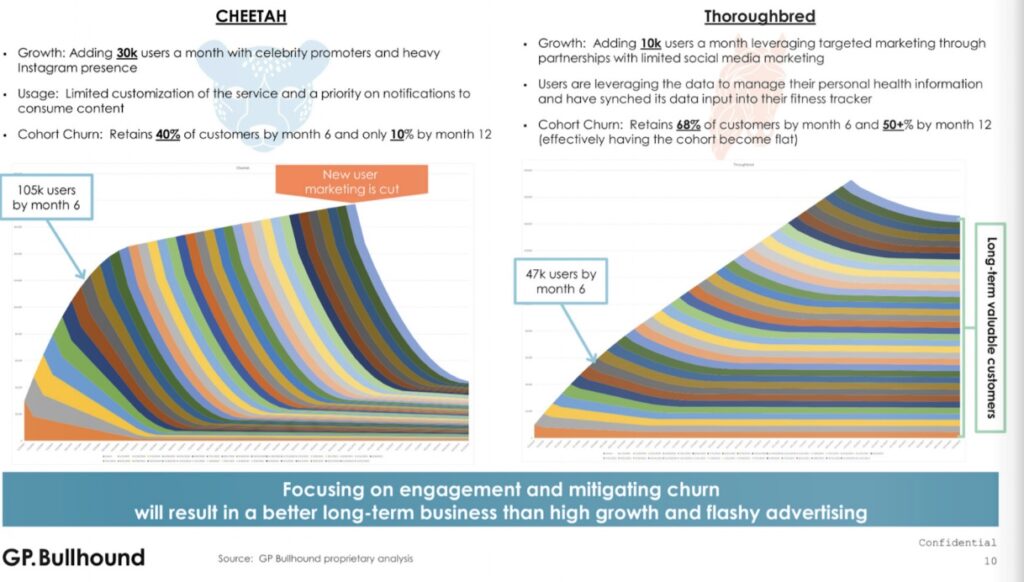
If you’ve ever read The Tortoise and the Hare, you know the old saying “slow and steady wins the race.” Basically, sprinting at the beginning of the race and quickly flaming out won’t win you any medals. It’s much better to take off at a reasonable speed and maintain your pace over a long period of time. To use Eric’s analogy, you want your app to be a thoroughbred, not a cheetah.
So how do you build a “thoroughbred” app? By optimizing your unique funnel instead of trying to match other people’s funnels.
Analyzing your funnel
Several months ago I saw a bunch of TikTok ads for a subscription photo app that claimed to do all sorts of amazing things with AI. But when you download and open the app, you hit a paywall before you can actually see what the app can do.
You have to sign up for a free trial, and then the app is nothing like what was advertised. Their funnel would look something like this:
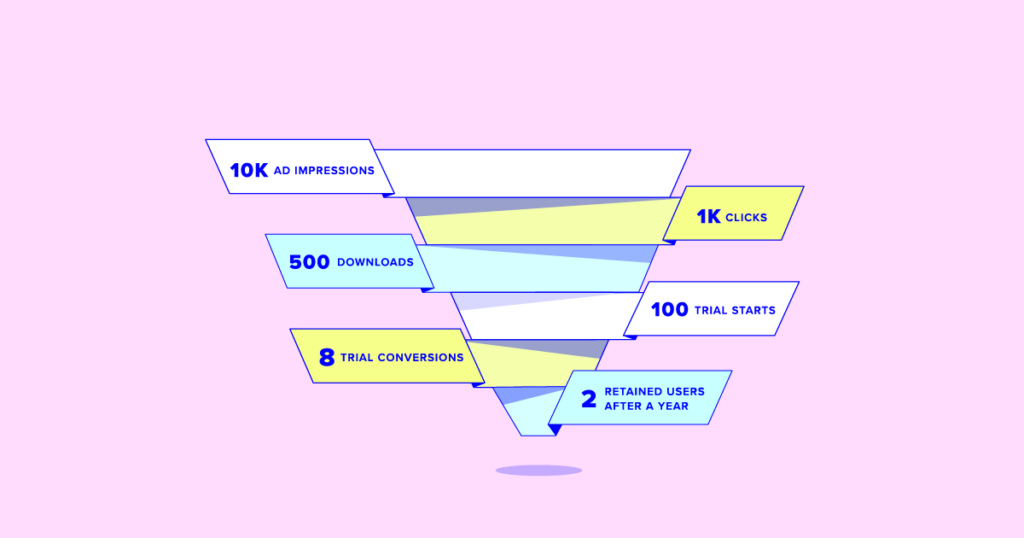
This is a perfect example of a “cheetah” app: dump a lot of users into the app by forcing people to start a free trial, and you may end up with a few that forget to unsubscribe. That’s just not a healthy business model and not something you should try to emulate.
A 20% trial start rate looks amazing on paper, and will skew benchmarks higher, but working hard to hit a benchmark like this is a fool’s errand once you understand how skewed those specific numbers can be.
On the other hand, there are a lot of apps with generous freemium tiers and a strong value proposition that encourages users to stick around after they start a free trial. Their ad conversion and trial start rate might appear low on paper, but they’re probably building a much healthier long-term business.
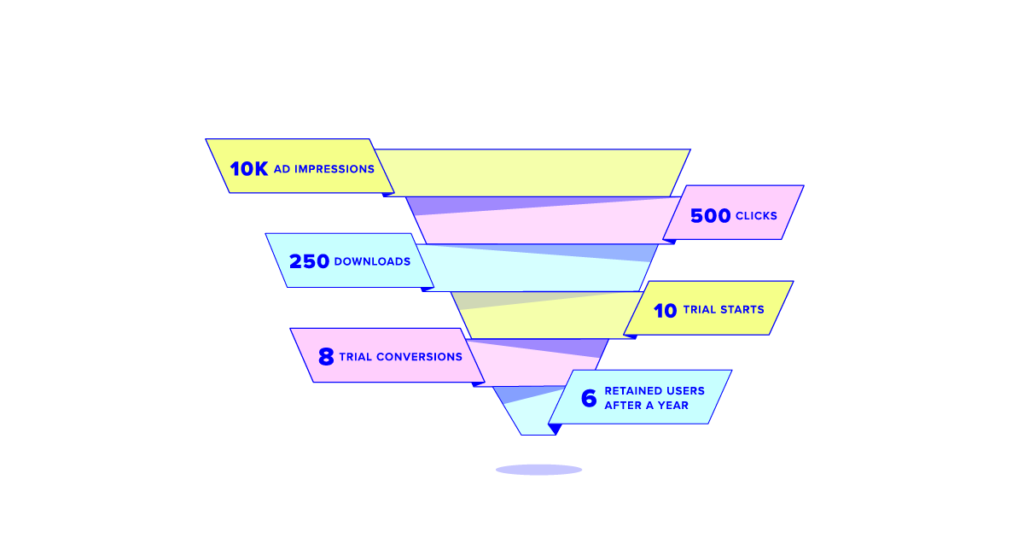
That 4% trial start rate may seem disappointingly low, but don’t be fooled — they’re at least on their way to building a thoroughbred app.
Freemium strategies
This sort of funnel analysis doesn’t take into account other factors that may be even more important in the long run. On a recent episode of the Sub Club podcast, Nick and Vu from the Zero app described how they think very carefully about the free experience in their app to make sure free users have a great experience and stay engaged.
The funnels above don’t show data on how many free users are retained over time.
Remember: anyone who downloads your app is demonstrating some level of intent for the value your app purportedly offers. They might not be ready to pay today, or feel particularly compelled by whatever features are behind your paywall, but for some apps the best strategy is to provide a great free experience and then win those customers over time as they end up needing one of your paid features.
Having to continually acquire new users can be a much bigger challenge (especially in a post-ATT world) than building a huge base of free users that slowly convert over time.
On the other hand, Majd Taby, developer of the photo editing app Darkroom, recently tweeted that very few of their subscribers sign up after the first day — even though the app has a generous free tier that makes it easy to use the app long-term without ever paying.
If your app has a similar conversion pattern, you might want to consider offering a less generous free tier, using a “hard” paywall, or showing your paywall more often. (Especially if you have costs associated with supporting your free users.)
For the Zero app, their mission is to “extend the lifespan and healthspan of the human race”, so helping everyone — even those who don’t want to pay or can’t afford a subscription — is a feature, not a bug.
Finding the right balance of free and paid features is one of the more challenging things to get right as a subscription app. If this is something you struggle with, check out the conversation we recently had with Phil Schwarz, former CMO of Tinder, on the Sub Club podcast.
Don’t get too hung up on benchmarks
These and so many other aspects of a healthy subscription app business can’t be summarized in a benchmark. And even if they could, those numbers are often skewed by apps with wildly different strategies and in different categories or industries.
Benchmarks can also be skewed by everything from user acquisition channels (paying less for low-intent installs vs. paying more for targeted, high-intent installs) to subscription mix (low-cost annual + high-cost monthly vs. apps that only offer an annual subscription).
As we post more benchmarks on our blog and find other ways to share our aggregate data, we’ll also be working to help developers make sense of that data and use it to inform their broader strategy — instead of getting too focused on numbers without context.
In-App Subscriptions Made Easy
See why thousands of the world's tops apps use RevenueCat to power in-app purchases, analyze subscription data, and grow revenue on iOS, Android, and the web.
